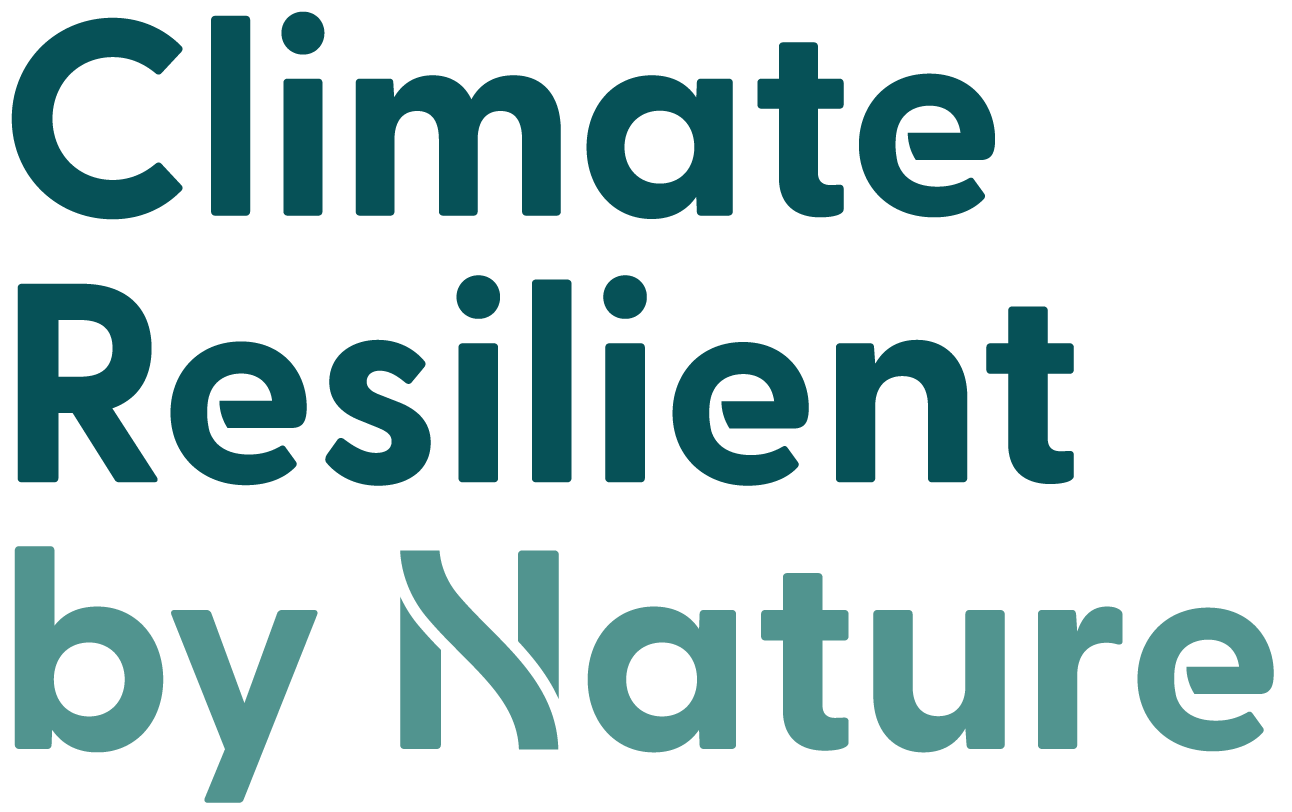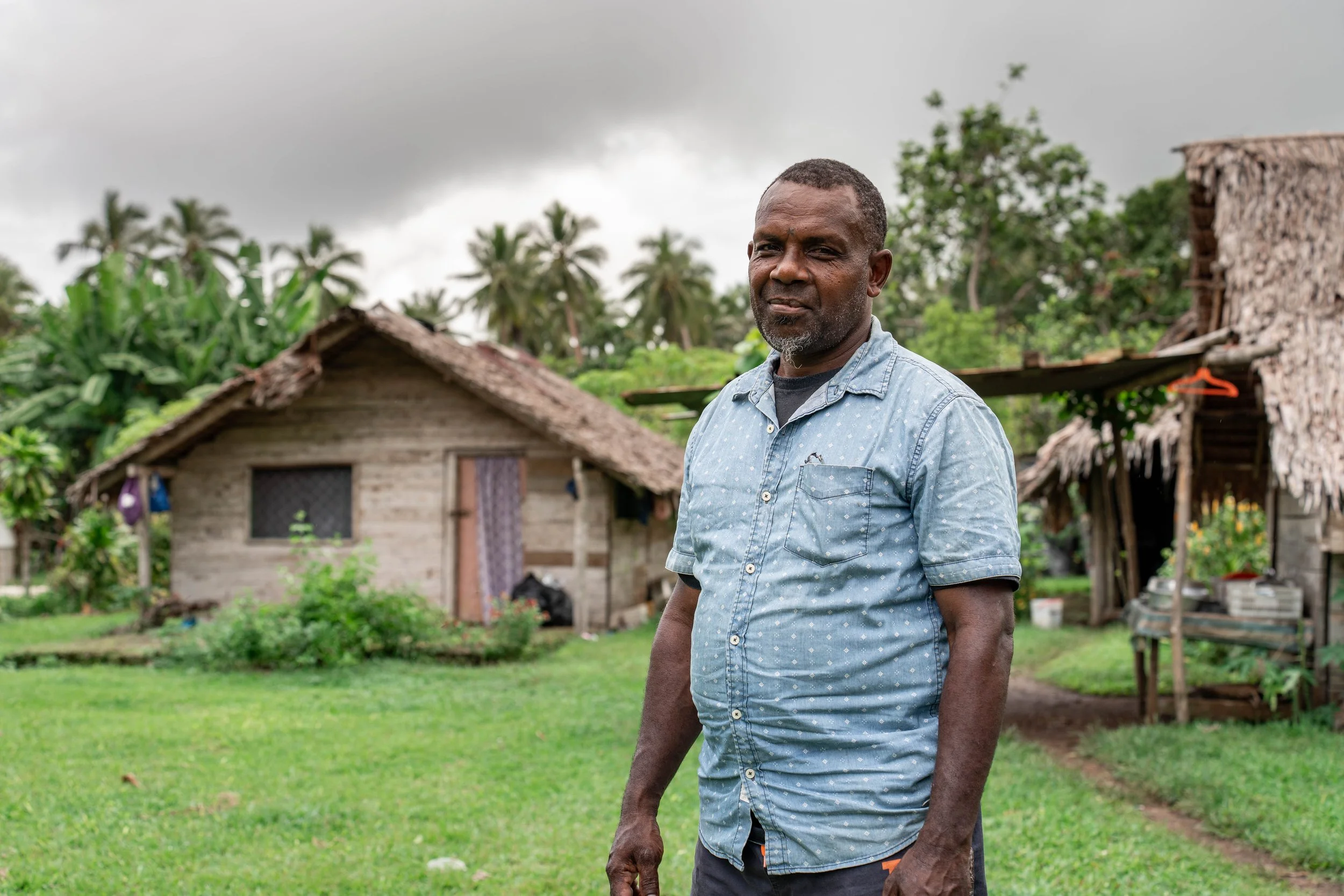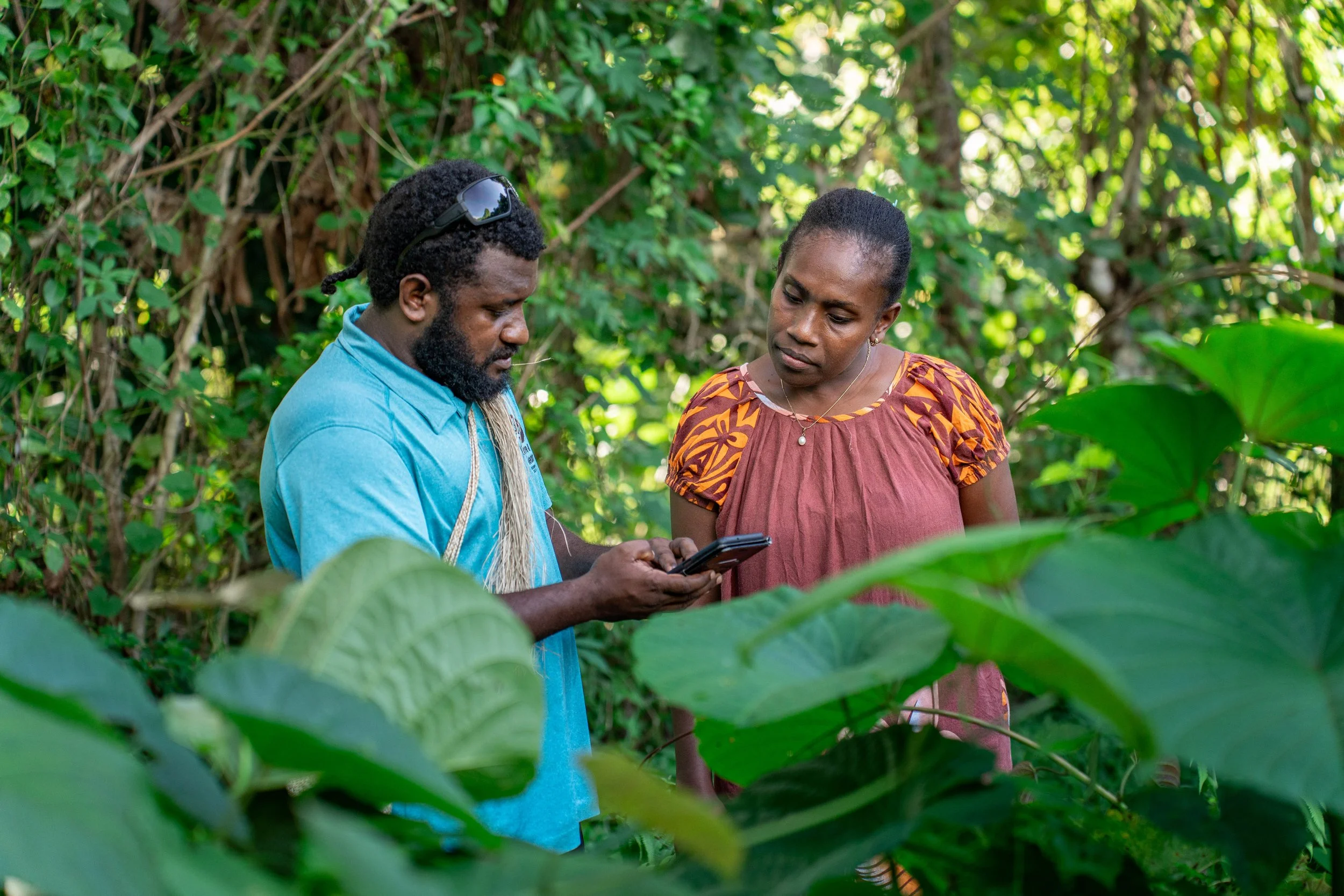Generation Restoration
Vanuatu’s next generation is following in their Elders’ footsteps to protect forests and build social, economic and climate resilience through nature-based solutions. The development of this Indigenous owned and managed forest restoration carbon project is supported by Live and Learn Environmental Education and Nakau with funding from Climate Resilient by Nature.
According to local lore, during World War II, a thick, woody vine was brought to the island of Espiritu Santo, Vanuatu to camouflage Allied operations. This invasive weed is merremia peltata, also known locally as big lif.
Although its origins remain uncertain, what is clear is its impact. Since its introduction, big lif has become prolific. So much so that when driving down certain stretches of road on the eastern side of Santo, the canopy of weeds covers everything in sight, creating almost the illusion of rolling hills.
Merremia thrives in landscapes that have been disturbed and degraded by human activities such as commercial logging and land clearing. It smothers native trees, reducing their ability to effectively capture and store carbon by up to 75%. Merremia eventually kills the trees, and in the process, slowly releases carbon back into the atmosphere, creating further emissions.
However, nearing Kole village, big lif noticeably starts to clear. Here, three generations of Traditional Custodians— the Serakar Clan —have been working tirelessly to protect, restore and manage the functionality of these forest ecosystems and build their community’s social, economic and climate resilience.
A vision handed down through generations
It was Chief Caleb of the Serakar Clan who inspired this conservation vision. According to his son, Chief Skip, “He would continuously remind me and the Serakar clan ‘We need to be careful. If we’re not careful, we will lose it’.”
Serthiac —a family-run business linked to the Serakar Clan— currently undertakes conservation activities to protect the native forests and regenerate degraded land across 220 hectares.
Chief Skip leads these efforts and is working closely with the next generation of forest protectors to ensure this vision continues.
“Santo doesn’t have [many] places like this anymore. Logging has destroyed forests. People [were] cutting down and burning trees until there’s nothing left. The only place left that is known as ‘protected’ is Loru Conservation Area. We protect the forest, the sea and our surrounding area.
The next generation of forest protectors
Riman was just a child when the Loru Conservation Area was first established and remembers this as a significant time that has instilled a sense of pride and responsibility.
“Our parents would tell us why the environment was important and why we needed to protect the wildlife, so we also saw this importance. That is why we are happy to hold on to this and look after everything for the future of our children,” shares Riman.
“When I am in the forest, I am happy. I have fresh air to breathe. It provides me with things I really need, like medicine. It reminds me that it is important for us to look after our forest. Because of the forest we have everything we need.”
Riman first worked as a Forest Ranger and is now the Nursery Manager in the Loru Conservation Area. In the nursery, Riman oversees the management of a variety of species that are planted in the community agroforestry plots, supporting food and income needs of local families. The nursery also includes native tree saplings that help restore the forest.
This is even more important as Serthiac continues its work to tackle merremia. Efforts to cut and clear the weed are underway in two sections of the forest where there is medium to significant coverage. Trees from Riman’s nursery are then planted in cleared areas, followed by ongoing maintenance.
“Merremia is a disaster inside [parts of] the Loru Conservation Area. Merremia is a type of vine that needs to be killed properly, right down to the ground. If you only treat it by cutting off the top, the merremia will grow again underground,” says Riman.
“It will continue growing until it reaches a tree, and that's when it affects [kills] the tree. So, the more logging people do, the more merremia enters the area. The more open the space, the faster merremia grows.”
Rocco is another young leader in the community, working closely with Chief Skip on weed removal. Machete in hand, Rocco and Chief Skip take to the thick and gnarled vines for hours at a time. Eventually, a clearing in the thicket is made, and although there’s a lot of work ahead, the difference is clear.
“I feel that we work really hard to cut merremia or big lif to the point that, when walking through now, it makes me happy to not see merremia growing or strangling trees,” says Rocco.
“Our grandparents protected this area for some time until the next generation took over, our parents, who have protected it till now. Time has passed, and now it is our turn to protect it just as they did so that future generations can benefit.”
A high-integrity approach
Serthiac’s long-term goal of this work is to safeguard and extend the tabu dakbus, the intact and healthy protected forest. Conservation activities in this section of forest is already generating income for the community through carbon credits. In addition, Serthiac’s efforts to manage merremia and restore degraded forests also have the potential to be connected to the carbon market and generate even greater benefits for people and nature.
In the Voluntary Carbon Market, project developers implement activities that remove, reduce or avoid greenhouse gas emissions. In the case of Serthiac, establishing protected areas avoids deforestation, and thus, avoids greenhouse gas emissions. Managing and restoring forests after merremia will also remove greenhouse gas emissions from the atmosphere.
Serthiac’s conservation activities are financed through carbon credits that are certified by a voluntary carbon standard — Plan Vivo Climate. A credit can be purchased by parties seeking to offset their emissions, and in the case of a high-integrity credit, contribute to broader positive impacts.
Through this, benefits have flowed back into the community, and Dorolyn is a testament to this approach. Income from the carbon project helped put Dorolyn through school. Now, she’s working with Serthiac as a Finance and Administration Officer and helping others in her community benefit.
“A good thing about this conservation area is that we have benefit-sharing in our communities. When the families share their benefits, they use it to buy water tanks or start small business such as little shops, and this motivates us to continue looking after our conservation area.”
The future of forest conservation
A community-owned and led approach to protecting native forests is a powerful nature-based solution for building resilience — socially, economically and ecologically. As climate impacts worsen, these approaches are needed more than ever and can deliver diverse co-benefits:
Climate: Forests absorb and store carbon and reduce emissions.
Biodiversity: Healthy forests support the habitat and thriving of native species in Vanuatu like, coconut crabs, bats and birds.
Food and livelihoods: Community agroforestry plots in the Conservation Area support household nutrition and livelihoods.
Community resilience: Income from carbon credits supports households to build their resilience to climate change impacts and enables them to invest in their community through water supply, housing and education.
Crucially, the success of these approaches hinges on generational engagement and the passing down of knowledge.
Dorolyn, a new mum, is looking forward to sharing her love for the forest with her daughter, while Riman would like to see this ambitious conservation vision mobilise more communities across Vanuatu.
“In five to 10 years, the change we want to see is the forest restored from merremia, and the restoration of wildlife in our forest,” says Riman.
If other communities follow the example of the Loru Conservation Area, we can form a big group to fight against climate change in the future.”
Carbon credits through the Loru Conservation Project are underpinned by the Nakau Methodology — a purpose-built high-integrity Pacific rainforest conservation finance program that takes a strong approach to upholding land and carbon rights, and which follows a rigorous free, prior and informed consent process (FPIC).
Learn more about this project here and discover the potential of carbon markets and how they can be best developed to deliver benefits for Pacific communities by visiting our Knowledge Hub.











